My interests lie at the interface of mathematics and biology, specifically mathematical modeling of population dynamics in the fields of ecology and epidemiology. My primary specialization is in model selection, where one tries to answer the question of which mathematical model best represents a system or best explains a set of data. By selecting the most parsimonious model (the model that best balances simplicity with goodness of fit), we can answer important questions about the populations under study. Typical questions one can answer with these methods are, “How long will it take for this population to go extinct under the current conditions?” or “How many people do we need to vaccinate to eradicate this disease?”
I’m always interested in working with students to study biological systems using mathematical models!
See my CV for a publication list.
Previous Undergraduate Research Projects
- Nathan Randle, “Estimating Average Boston Marathon Time from the Winning Times,” Summer 2020.
- Charlotte Beckford, Montana Ferita, and Julie Fucarino, “Biomath Modeling: Pollen Competition” VERUM 2019.
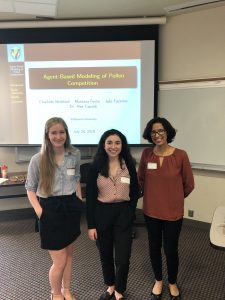
- Ryan Kulwicki, “Agent-based Modeling of the Evolution of the Domestic Dog,” MATH 497-498, 2018-19.
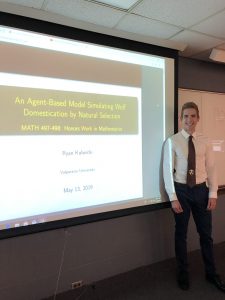
- Katherine Bassett, in consultation with Dr. Rob Swanson and his student Craig Garzella,”Agent-based Modeling of Pollen Competition,” MATH 496, Spring 2018.
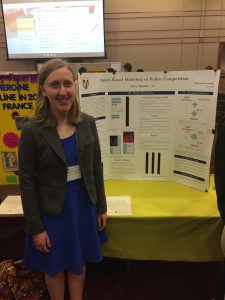
- Ashley Hire, Samuel Iselin, Michael Revor “Mathematical Modeling of the Evolution of the Domestic Dog,” MATH 496, 2017-18.
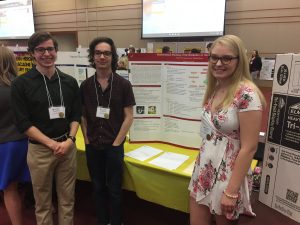
- Eva Cornwell, David Elzinga, Shelby Stowe, “Mathematical Modeling in Ecology: White-Nose Syndrome in North American Bats,” VERUM 2017.
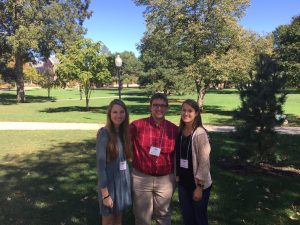
- Matthew Klapman, “A Simulation of Anthropogenic Mammoth Extinction,” MATH 497-498, 2016-17.
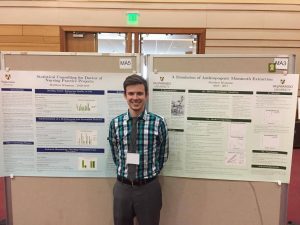
- Jordan Bauer, “Mathematical Modeling of Vaccination Noncompliance,” summer 2016, MATH 492, Spring 2017.
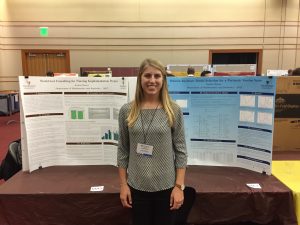
- Samuel Iselin, Shannon Segin, in consultation with Dr. Laurie Eberhardt and her students Sylas Buller, Kathleen Hebble, “An Agent-Based Modeling Approach to Determine Winter Survival Rates of American Robins and Eastern Bluebirds,” MATH 492, 2015-16.
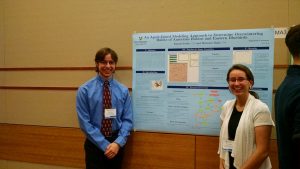
- Erin Boggess, Jordan Collignon, Alanna Riederer, “Mathematical Modeling in Ecology: Simulating the Reintroduction of the Extinct Passenger Pigeon,” VERUM 2015.
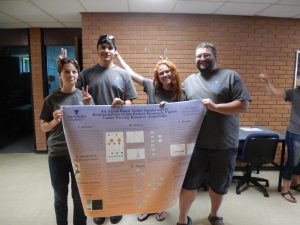
- Michael Frank, Anneliese Slaton, Teresa Tinta, “Mathematical Modeling in Ecology: What Killed the Mammoth?” VERUM 2013.
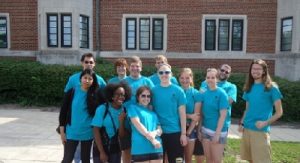
- Ana Eveler, Tayler Grashel, Abby Kenyon, Jessica Richardson, “Optimizing the Allocation of Vaccines in the Presence of Multiple Strains of the Influenza Virus,” MATH 492, 2012-13.
- Sydney Philipps, Dan Rossi, Rachel Von Arb, “Mathematical Models in Infectious Diseases: Multistrain Infections in Metapopulations,” VERUM 2011.
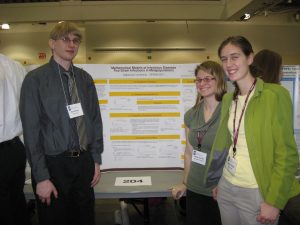
- Teryn Gehred, Justin Nettrouer, Patrick Slattery, “Modeling Humans Vs. Zombies with Differential Equations,” MATH 492, 2010-11.

